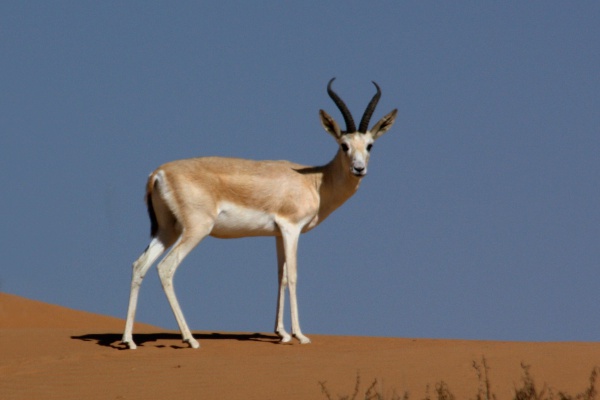Facts About Goitered (Arabian Sand, Persian) Gazelle
The goitered gazelle, also known as the black-tailed gazelle, is an intriguing species found across a range of countries including Georgia, Azerbaijan, Iran, Iraq, Pakistan, Afghanistan, Tajikistan, Kyrgyzstan, Uzbekistan, Turkmenistan, Kazakhstan, China, and Mongolia. During the mating season, male goitered gazelles exhibit a noticeable swelling in their neck and throat.
These gazelles thrive in a variety of terrains such as sandy deserts, gravel plains, and limestone plateaus. Historically, large herds roamed the Near East, where they were often hunted using ancient methods like desert kites. Fascinatingly, rock art in Jordan suggests that these hunts may have had ritualistic elements.
One distinctive characteristic of the goitered gazelle is its running style. Unlike other gazelles that bound while running, goitered gazelles maintain a smooth, high-speed gait. They are also known for their seasonal migrations, covering long distances daily. Their mating system is polygynous, with males typically mating with multiple females in early winter.
There are several recognized subspecies of the goitered gazelle, some of which are sometimes considered separate species. These include the Persian gazelle, Turkmen gazelle, and Yarkand gazelle. Unfortunately, the goitered gazelle is listed as an endangered species in Pakistan. The Arabian sand gazelle was once considered a subspecies but has since been reclassified.
Recent genetic studies have provided new insights into these gazelles. One subspecies, Gazella marica, has been found to be paraphyletic, meaning it does not include all descendants from a common ancestor. There is also evidence of gene flow between Gazella marica and other goitered gazelle populations, indicating some level of genetic mixing where their ranges overlap.

 Armenia
Armenia